|
|
ISLA SAN GIORGIO (VENECIA)=GEORGE LEMAITRE
GEMATRIA EN INGLES DE SEED=33
GEMATRIA EN INGLES DE GATE=33
SARA (CE-SAREA DE FILIPO)=PARALELO 33
 the Apple
| milky way in Simple Gematria Equals: 119 |
( |
m 13 |
i9 |
l 12 |
k 11 |
y 25 |
0 |
w 23 |
a1 |
y 25 |
) |
| queen mary in Simple Gematria Equals: 119 |
( |
q 17 |
u 21 |
e5 |
e5 |
n 14 |
0 |
m 13 |
a1 |
r 18 |
y 25 |
|
| hebrew calendar in Simple Gematria Equals: 119 |
( |
h8 |
e5 |
b2 |
r 18 |
e5 |
w 23 |
0 |
c3 |
a1 |
l 12 |
e5 |
n 14 |
d4 |
a1 |
r 18 |
| mary magdalene in Simple Gematria Equals: 119 |
( |
m 13 |
a1 |
r 18 |
y 25 |
0 |
m 13 |
a1 |
g7 |
d4 |
a1 |
l 12 |
e5 |
n 14 |
e5 |
|

|
|
|
|
|
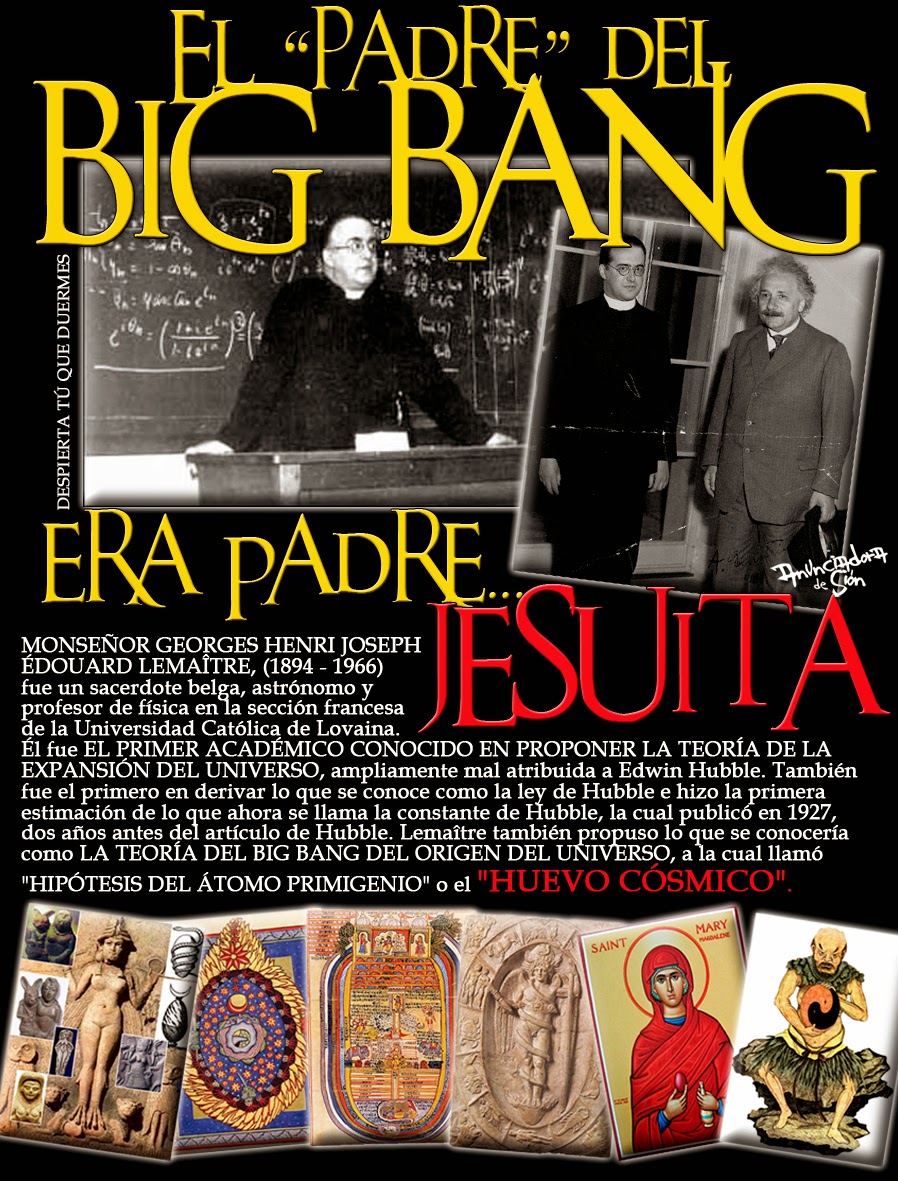 


11 DE SEPTIEMBRE O SEPTIEMBRE 11
11/9 O 9/11
Sapientia Aedificavit Sibi Domum. Es decir, "la sabiduría ha edificado aquí su casa". Resulta curioso que la misma frase aparece en el Evangelio de María Magdalena, un texto apócrifo. Se dice que en el interior de esta iglesia y de otras muchas de Venecia está escondido el tesoro de los templarios. Pero no hay ninguna prueba de ello. Para terminar ya con esta entrada me gustaría que nos acercásemos un momento a uno de los edificios más emblemáticos de Venecia: el Palacio Ducal.

La Maddalena

La Maddalena

Tomb of Tommaso Temanza

ISLA SAN GIORGIO (VENECIA)=GEORGE LEMAITRE
GEMATRIA EN INGLES DE SEED=33
GEMATRIA EN INGLES DE GATE=33
SARA (CE-SAREA DE FILIPO)=PARALELO 33
"¡Oh profundidad de las riquezas de la sabiduría (sophia)
y de la ciencia (gnwsiV, gnosis) de Dios!
¡Cuán incomprensibles son sus juicios, e inescrutables sus caminos!"
(Romanos, 11: 33).
25 DE ABRIL=DIA DE SAN MARCOS
22 DE JULIO=DIA DE MARIA LA MAGDALENA
 the Apple
| milky way in Simple Gematria Equals: 119 |
( |
m 13 |
i9 |
l 12 |
k 11 |
y 25 |
0 |
w 23 |
a1 |
y 25 |
) |
| queen mary in Simple Gematria Equals: 119 |
( |
q 17 |
u 21 |
e5 |
e5 |
n 14 |
0 |
m 13 |
a1 |
r 18 |
y 25 |
|
| hebrew calendar in Simple Gematria Equals: 119 |
( |
h8 |
e5 |
b2 |
r 18 |
e5 |
w 23 |
0 |
c3 |
a1 |
l 12 |
e5 |
n 14 |
d4 |
a1 |
r 18 |
| mary magdalene in Simple Gematria Equals: 119 |
( |
m 13 |
a1 |
r 18 |
y 25 |
0 |
m 13 |
a1 |
g7 |
d4 |
a1 |
l 12 |
e5 |
n 14 |
e5 |
|

|
|
|
|
|



16. Génesis 49:27 Benjamín es lobo arrebatador; A la mañana comerá la presa, Y a la tarde repartirá los despojos.
169. Romanos 11:1 Digo, pues: ¿Ha desechado Dios a su pueblo? En ninguna manera. Porque también yo soy israelita, de la descendencia de Abraham, de la tribu de Benjamín. 170. Filipenses 3:5 circuncidado al octavo día, del linaje de Israel, de la tribu de Benjamín, hebreo de hebreos; en cuanto a la ley, fariseo;
PABLO, ESTA EN FUNCION A LA MISMA SANTA CENA, OSEA EL MISMO RELOJ.
JERUSALEN ESTABA EN LA TRIBU DE BENJAMIN, OSEA QUE ES OBVIO QUE LA NUEVA JERUSALEN ES PABLO MISMO
PABLO/PEQUEÑO/PERRO/LOBO/GUERRA/MARTE/GRIAL
PABLO ES UN TIPO DEL GRIAL MISMO
16. Génesis 49:27 Benjamín es lobo arrebatador; A la mañana comerá la presa, Y a la tarde repartirá los despojos.
169. Romanos 11:1 Digo, pues: ¿Ha desechado Dios a su pueblo? En ninguna manera. Porque también yo soy israelita, de la descendencia de Abraham, de la tribu de Benjamín. 170. Filipenses 3:5 circuncidado al octavo día, del linaje de Israel, de la tribu de Benjamín, hebreo de hebreos; en cuanto a la ley, fariseo;
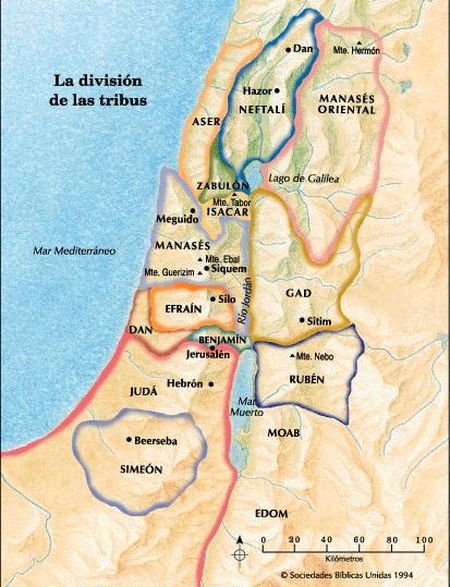 LAS DOCE TRIBUS DE ISRAEL LAS DOCE TRIBUS DE ISRAEL

13 HIJOS MAS DINA, LA UNICA HIJA MUJER
JABOB=ISRAEL=VENCEDOR

The classic logarithmic Golden Spiral

LLAVE DE ORO Y DE PLATA AL IGUAL QUE LA MANZANA
| milky way in Simple Gematria Equals: 119 |
( |
m 13 |
i9 |
l 12 |
k 11 |
y 25 |
0 |
w 23 |
a1 |
y 25 |
) |
| queen mary in Simple Gematria Equals: 119 |
( |
q 17 |
u 21 |
e5 |
e5 |
n 14 |
0 |
m 13 |
a1 |
r 18 |
y 25 |
|
| hebrew calendar in Simple Gematria Equals: 119 |
( |
h8 |
e5 |
b2 |
r 18 |
e5 |
w 23 |
0 |
c3 |
a1 |
l 12 |
e5 |
n 14 |
d4 |
a1 |
r 18 |
| mary magdalene in Simple Gematria Equals: 119 |
( |
m 13 |
a1 |
r 18 |
y 25 |
0 |
m 13 |
a1 |
g7 |
d4 |
a1 |
l 12 |
e5 |
n 14 |
e5 |
|

| milky way in Simple Gematria Equals: 119 |
( |
m 13 |
i9 |
l 12 |
k 11 |
y 25 |
0 |
w 23 |
a1 |
y 25 |
) |
| queen mary in Simple Gematria Equals: 119 |
( |
q 17 |
u 21 |
e5 |
e5 |
n 14 |
0 |
m 13 |
a1 |
r 18 |
y 25 |
|
| hebrew calendar in Simple Gematria Equals: 119 |
( |
h8 |
e5 |
b2 |
r 18 |
e5 |
w 23 |
0 |
c3 |
a1 |
l 12 |
e5 |
n 14 |
d4 |
a1 |
r 18 |
| mary magdalene in Simple Gematria Equals: 119 |
( |
m 13 |
a1 |
r 18 |
y 25 |
0 |
m 13 |
a1 |
g7 |
d4 |
a1 |
l 12 |
e5 |
n 14 |
e5 |
|
|
|
|
|
|
Descripción
George Douglas McFly es un personaje de la trilogía de Back to the Future. Es el padre de Marty McFly; uno de los personajes protagonistas de la primera película, pero un secundario en las dos secuelas. Wikipedia
|
|
|
|
|
| milky way in Simple Gematria Equals: 119 |
( |
m 13 |
i9 |
l 12 |
k 11 |
y 25 |
0 |
w 23 |
a1 |
y 25 |
) |
| queen mary in Simple Gematria Equals: 119 |
( |
q 17 |
u 21 |
e5 |
e5 |
n 14 |
0 |
m 13 |
a1 |
r 18 |
y 25 |
|
| hebrew calendar in Simple Gematria Equals: 119 |
( |
h8 |
e5 |
b2 |
r 18 |
e5 |
w 23 |
0 |
c3 |
a1 |
l 12 |
e5 |
n 14 |
d4 |
a1 |
r 18 |
| mary magdalene in Simple Gematria Equals: 119 |
( |
m 13 |
a1 |
r 18 |
y 25 |
0 |
m 13 |
a1 |
g7 |
d4 |
a1 |
l 12 |
e5 |
n 14 |
e5 |
|

|
|
|
|
|
|
|
|
Hércules (constelación)
De Wikipedia, la enciclopedia libre
Recibe su nombre del héroe mitológico, Hércules y es la quinta en tamaño de las 88 constelaciones modernas. También era una de las 48 constelaciones de Ptolomeo.
[editar] Características destacables
No tiene estrellas de primera magnitud, siendo la más brillante β Herculis con magnitud 2,78. μ Herculis se encuentra a 27,4 años luz de la Tierra. El Ápex solar (punto del cielo que indica la dirección hacia la que se mueve el Sol en su órbitaalrededor del centro de la galaxia) se encuentra en Hércules, cerca de ξ Herculis.
[editar] Estrellas principales
- α Herculis (Ras Algethi o Rasalgethi), de magnitud 3,31, es un sistema estelar triple, cuya estrella principal es una gigante roja variable.
- β Herculis (Kornephoros), la más brillante de la constelación con magnitud 2,78, una estrella gigante amarilla.
- γ Herculis, gigante blanca de magnitud 3,74. Es una binaria espectroscópica con un período orbital de 11,9 días.
- δ Herculis (Sarin), estrella blanca de magnitud 3,12; es una estrella binaria cuyas componentes han sido resueltas por interferometría.
- ε Herculis, binaria espectroscópica de magnitud 3,91.
- ζ Herculis, la segunda más brillante de la constelación con magnitud 2,89, estrella doble formada por dos estrellas amarillas de desigual brillo.
- η Herculis, gigante amarilla de magnitud 3,49.
- θ Herculis, gigante luminosa naranja de magnitud 3,85.
- ι Herculis, subgigante azul de magnitud 3,79; tres estrellas más completan este sistema estelar cuádruple.
- κ Herculis A y κ Herculis B, dos gigantes que forman una doble óptica.
- λ Herculis (Maasym), gigante naranja de magnitud 4,40.
- μ Herculis, sistema estelar cercano que dista del Sistema Solar 27,4 años luz.
- π Herculis, gigante naranja de magnitud 3,16.
- ρ Herculis, estrella doble cuyas componentes, separadas 4 segundos de arco, brillan con magnitud 4,56 y 5,42.
- τ Herculis, estrella B pulsante lenta (SPB) con una tenue compañera a 7,6 segundos de arco.
- χ Herculis, enana amarilla de baja metalicidad que se encuentra a 52 años luz de distancia.
- ω Herculis (Kajam), de magnitud 4,57.
- 8 Herculis, estrella blanca de magnitud 6,13 que forma una doble óptica con Kappa Herculis —separación 0,2º—.
- 14 Herculis, enana naranja a 59,2 años luz con una enana marrón o planeta gigante alrededor. En 2006 se descubrió un posible segundo compañero, aún sin confirmar.
- 30 Herculis (g Herculis), gigante roja y variable semirregular cuyo brillo oscila entre magnitud 4,3 y 6,3 en un ciclo de 89,2 días.
- 68 Herculis (u Herculis), binaria eclipsante en donde existe transferencia de masa desde la secundaria hacia la primaria.
- 72 Herculis (w Herculis), enana amarilla similar al Sol a 47 años luz de distancia.
- 89 Herculis, supergigante amarilla en las etapas finales de su evolución estelar.
- 95 Herculis, estrella binaria compuesta por una gigante blanca y una gigante amarilla separadas 6,3 segundos de arco.
- 99 Herculis, binaria de baja metalicidad cuya primaria es una enana amarilla de magnitud 5,20.
- 101 Herculis, gigante blanca de magnitud 5,11.
- 109 Herculis, gigante naranja de magnitud 3,84, la duodécima estrella más brillante de la constelación.
- 111 Herculis, estrella blanca de magnitud 4,35.
- X Herculis, variable pulsante semirregular cuyo brillo varía entre magnitud 6 y 7 en un período de 95 días.
- SZ Herculis y FN Herculis, binarias eclipsantes de magnitud 9,94 y 11,08 respectivamente.
- UX Herculis, binaria eclipsante de magnitud 9,05; durante el eclipse principal su brillo disminuye 1,16 magnitudes.
- OP Herculis, gigante luminosa roja variable entre magnitud 5,85 y 6,73.
- HD 147506, subgigante amarilla en donde se ha detectado un planeta masivo (HAT-P-2b) en una órbita excéntricacercana a la estrella.
- HD 149026, estrella subgigante con un planeta cuya masa es similar a la de Saturno.
- HD 154345, enana amarilla a 58,91 años luz con un planeta extrasolar.
- Gliese 623, estrella binaria compuesta por dos enanas rojas.
- Gliese 686 y Gliese 649, enanas rojas a 26,5 y 33,7 años luz respectivamente; la segunda de ellas posee un planeta.
- HD 155358, estrella de baja metalicidad con dos planetas que interactúan gravitacionalmente.
- Gliese 638 y HR 6806, enanas naranjas situadas respectivamente a 31,9 y 36,2 años luz de distancia de la Tierra.
- GD 362, enana blanca con un anillo similar a los de Saturno.
- http://es.wikipedia.org/wiki/H%C3%A9rcules_(constelaci%C3%B3n)
  
ISLA SAN GIORGIO (VENECIA)=GEORGE LEMAITRE
GEMATRIA EN INGLES DE SEED=33
GEMATRIA EN INGLES DE GATE=33
SARA (CE-SAREA DE FILIPO)=PARALELO 33
"¡Oh profundidad de las riquezas de la sabiduría (sophia)
y de la ciencia (gnwsiV, gnosis) de Dios!
¡Cuán incomprensibles son sus juicios, e inescrutables sus caminos!"
(Romanos, 11: 33).
25 DE ABRIL=DIA DE SAN MARCOS
22 DE JULIO=DIA DE MARIA LA MAGDALENA
|
|
|
|
|
 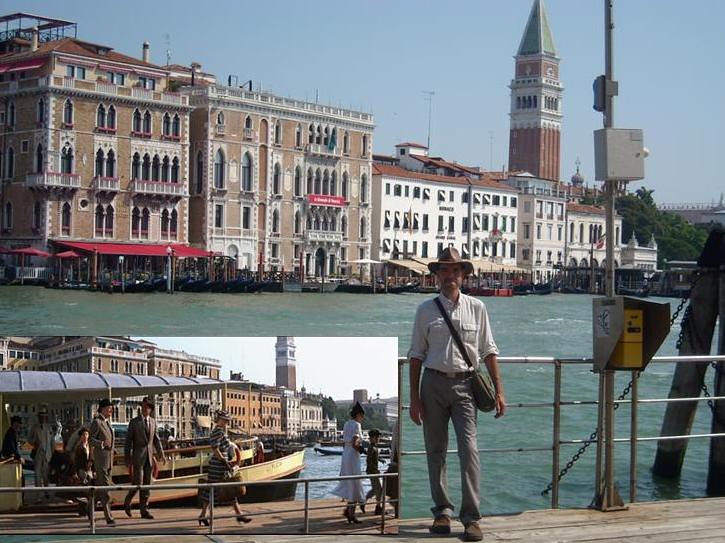

La Iglesia de San Barnaba se encuentra en la preciosa ciudad italiana de Venecia. Es muy famosa sobre todo, por salir en una de las películas más míticas del mundo del cine “Indiana Jones y la Última Cruzada”.
Esta iglesia está situada en la plaza Campo de San Barnaba y al lado del Ponte dei Pugni (el puente de los puños, en español), uno de los puentes más famosos de toda Venecia, por ser el lugar dónde se enfrentaron los rivales de los Castellani y los Nicolotti. Es conocida con dos nombres: la iglesia de San Barnaba o la parroquia de San Barnaba. Su nombre proviene por estar situada al lado del río San Barnaba.
Esta iglesia fue construida a principios del siglo IX. Más tarde, fue restaurada en el siglo XVIII. Su fachada es de estilo clásico, decorada con semi – columnas y unos capiteles corintios. En este mismo siglo, esta parroquia es famosa por ser la residencia de los patricios venecianos, conocidos como los “barnabotti”.
La torre del campanario fue reconstruida en el año 1584, posee columnas de mármol y capiteles jónicos.
En el interior encontraréis una sola nave, acompañada de seis capillas laterales y con un ábside rectangular. Su bóveda fue pintada por Jacopo Antonio Manini, en el año 1708. Además, podréis observar obras de gran valor como la famosa “Sagrada Familia” del artista Paolo Veronese, entre otros. También, a lo largo de toda la iglesia encontrareis diferentes estatuas de granito diseñadas por Diomiro Cignaroli, en las que se representan a los santos Francisco di Paola y Barnaba, entre otros.
Aunque en la película de “Indiana Jones” aparece una escena en esta iglesia, siendo esta una biblioteca, los fans de esta saga se llevaran una pequeña desilusión al ver que no es una biblioteca si no que, es una iglesia normal, como todas las del mundo. Aunque tiene el encanto de poder decir aquello de “Yo estuve allí” y nunca esta demás, visitar escenarios originales de películas tan famosas como estas.
Una iglesia para los cinéfilos y los amantes de esta saga tan popular, la mayoría de las visitas que recibe son por este motivo y si no, también es digna de visitar por su situación y por estar al lado de uno de los puentes con más historia de Venecia.
Información de interés:
• Dirección: Campo de San Barnaba, Dorsoduro 30123, Venecia.
• Horario: abierto de 7:30 a 12:00 horas.
https://sobreitalia.com/2010/02/11/iglesia-de-san-barnaba-para-fans-de-indiana-jones/
|
|
|
|
|
|
4. SCALA CONTARINI DEL BOVOLO: 45.434838, 12.334694
Ya aviso que no es nada fácil de encontrar, de hecho, es uno de esos rincones que pasan totalmente desapercibidos a menos que sepas de su existencia. Normalmente, todos los palacios tienen dos entradas, una principal que da hacia el Gran Canal y que es más espectacular, y otra secundaria que era usada por el servicio. Pues bien, este es de los pocos palacios en los que su entrada secundaria es casi más bonita que la principal, todo gracias a una maravillosa escalera de Caracol que hace las delicias de los descubridores viandantes (Bovolo significa Caracol).
Cerca de este Palacio se encuentra el famoso teatro de La Fenice, donde han sonado las Óperas italianas más importantes de la historia.
|
|
|
|
|
|
SCALA CONTARINI DEL BOVOLO
Escondida en un laberinto de calles y canales, a pocos pasos de Campo Manin, en uno de los principales itinerarios turísticos venecianos, surge una joya arquitectónica caracterizada de un estilo entre renacimental (por la utilización de algunos elementos), gótica (por la técnica de costrucción) y veneto-bizantina (por la forma): la Scala Contarini del Bovolo.
La escalera a espiral más importante y prestigiosa de Venecia, fue encargada su realización por Pietro Contarini a finales del 1400, con el objetivo de decorar la fachada del colindante Palazzo San Paternian de propiedad de la ilustre familia veneciana.
La realización de esta ópera, no tenía al inicio un verdadero motivo funcional, consistía simplemente en un acto de prestigio, se buscaba únicamente aumentar la popularidad y prestigio del clan familiar.
La creación de la escalera ha tenido una resonancia tan fuerte que llevó a la ciudadanía a dar un nombre característico a la familia, como “Contarini del Bovolo” (por la forma particular de la escalera a forma de caparazón de caracol, que en veneciano se dice “bovolo”).
El pórtico en el segundo piso de la Scala del Bovolo conduce a una sala prestigiosa del Palazzo Contarini (Sala del Tintoretto) en donde se encuentran expuestas las obras provenientes de la colección de arte del IRE, que está constituída de pinturas, esculturas y objetos de un significado importante de época veneciana con los más ilustres protagonistas del panorama artístico veneciano del 1500 al 1700.
Cerrado:
1 de Enero, 15 agosto, 1 noviembre, 25 y 26 diciembre.
Cierre extraordinario: 9 abril de las 10:00 a las 12,30
La ventanilla cierra 30 minutos antes de que cierre el museo.
Precios
- 7€ Entero
- 6€ Reducido: Menores de 26 años, Mayores de 65, Socios FAI
Gratuito:
- Menores hasta12 años
- Guías Turísticas autorizadas
- Residentes en Venecia (con documento de reconocimiento y residencia)
- Dependientes IRE y Fundación Venecia Servicios a la Persona
Las entradas gratuitas deben ser adquiridas en la ventanilla. No se pueden reservar. Reservación obligatoria para grupos de más de 10 personas.
https://www.todayinvenice.com/es/exposiciones-y-museos/museos/scala-contarini-del-bovolo/502/2018-06-27 |
|
|
|
|
|
|
|
1. Génesis 28:12 Y soñó: y he aquí una ESCALERA que estaba apoyada en tierra, y su extremo tocaba en el cielo; y he aquí ángeles de Dios que subían y descendían por ella.
2. 1 Reyes 6:8 La puerta del aposento de en medio estaba al lado derecho de la casa; y se subía por una ESCALERA de caracol al de en medio, y del aposento de en medio al tercero.
3. Ezequiel 41:7 Y había mayor anchura en las cámaras de más arriba; la ESCALERA de caracol de la casa subía muy alto alrededor por dentro de la casa; por tanto, la casa tenía más anchura arriba. Del piso inferior se podía subir al de en medio, y de éste al superior.
| Reply |
Message 89 of 90 on the subject |
|
|
|
|
| Reply |
Message 90 of 90 on the subject |
|
|
|
|
|
|
|
|
|
|
|
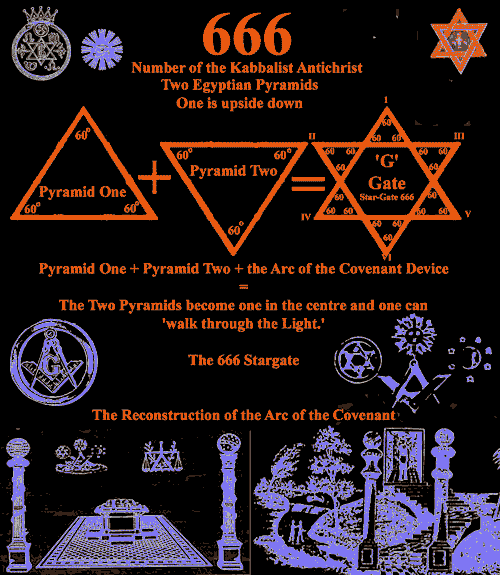
  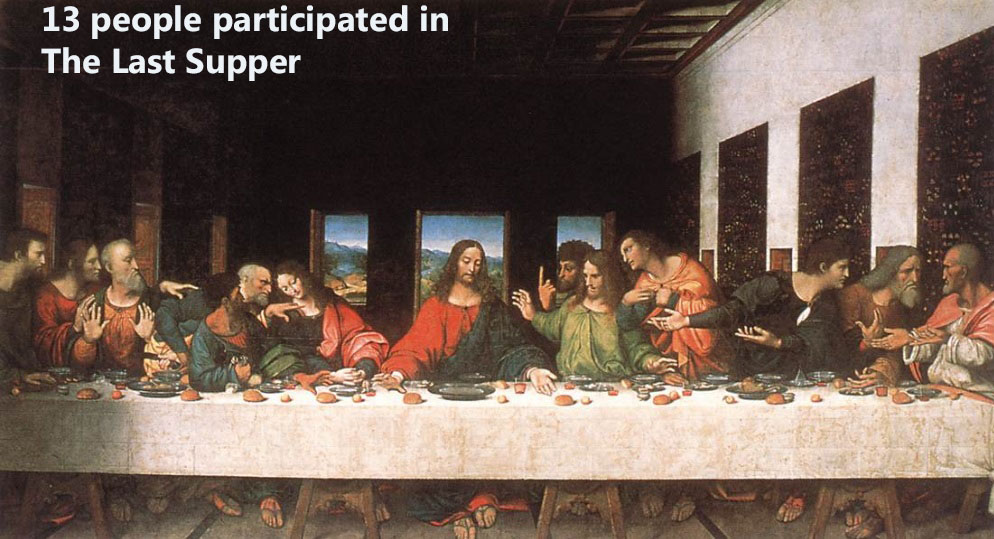
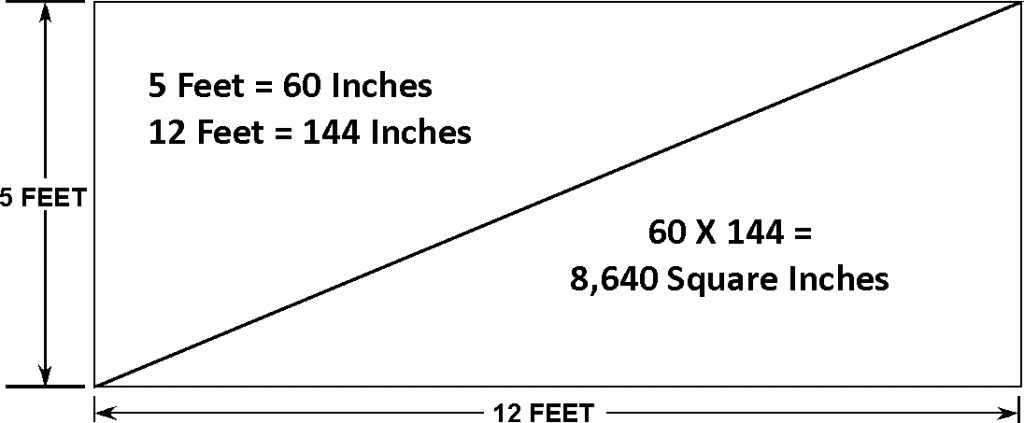
  Las piedras de estaciones de Stonehenge forman un rectángulo con la proporción de 5:12 - Mapa con Stonehenge y la isla Caldey mostrando la distancia proporcional de 12,369 - eso es el número de lunas llenas por año Las piedras de estaciones de Stonehenge forman un rectángulo con la proporción de 5:12 - Mapa con Stonehenge y la isla Caldey mostrando la distancia proporcional de 12,369 - eso es el número de lunas llenas por año
5. Stonehenge - geometría secreta - triángulo de 5:12, estrella de 7 puntos, número 1234, Stonehenge+isla Lundy -- Nueva York con un triángulo en el Parque Central como Stonehenge tiene -- Stonehenge: la proporción original de 5:12 -- Stonehenge: William Stukeley y druidas para la francmasonería -- Stonehenge: una estrella de 7 puntos e Isis -- Distancias: Stonehenge - Averbury - la colina de Silbury -- Stonehenge, monumento de Averbury y el monumento de Silbury - números con sol, luna y el cubo de Isis -- Stonehenge y su cantera en las montañas Preseli en Gales apr. 130 millas en el oeste -- El número 1234: Stonehenge - isla Lundy 123,4 millas -- Triángulo Stonehenge - cantera de Preseli - isla Lundy: 5:12 -- Copias de Stonehenge en el mundo - francmasones e iluminados criminales ponen sus símbolos de poder - p.e. en Lima en el Perú -- Hay una copia de Stonehenge en el centro de Lima en el parque de fontanas (parque de la reserva) -- 6. Milla y pies y luna y Tierra - números 3456, 108, 528 -- La milla y Stonehenge: 108 millas reales = 123,4 millas internacionales -- Número 108: Tierra, religiones, luna etc. -- Luna y número 108: radio 1080 millas reales -- Pie y Tierra: 360 grados x 365,242 días x pie x 1.000 = circunferencia de la Tierra -- Milla y Tierra: 12 elevado 5 dividido por 10 millas = circunferencia de la Tierra -- El pie inglés es el origen del sistema antiguo de mediciones -- 7. Stonehenge, la cantera y las islas 5:12 - Newton y su número 33 -- Stonehenge: isla Lundy + isla Caldey: 3:2 - Stonehenge-isla Caldey=12,369 = número de lunas llenas por año -- Newton: su escala de temperatura y el número 33
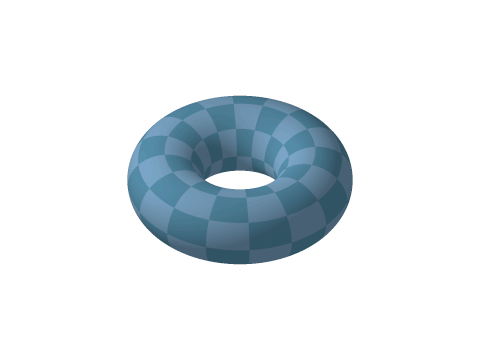 Aqui tenemos a Pi - la circunferencia del toro y la vesica piscis 256/153 equivalente a la raiz cuadrada de 3 En el hipercubo las coordinadas binarias de Piscis son decimal 3 y binario 11 153 los pescados de Jesus en la biblia
|
|
|
|
|
“The most effective way to destroy people is to deny and obliterate their own understanding of their history.”
---- George Orwell
My own reproduction of the Templar relics in the form of a female silver head containing a couple of skull bones of a small woman with the word Caput LVIII M.
Templar Foundations
A Templar ship
Brass Plate
Magdalene Vault
During my past life regression along with my spiritual portrait, my research on Mary Magdalene and my conversations with various mediums and historians there is one group of people who keep cropping up time and time again, The Knights Templar.
The Templars were founded around the year 1118 as an order of fighting monks whose job was to protect the pilgrims visiting the Holy land. It must be noted here however that no evidence has suggested the Templars actually carried out this particular task. Moreover, there have been suggestions their actual task was for something else like excavation work. It’s also important to note that the order began with only nine members for the first nine or so years which would have made it very difficult to cover all pilgrim routes to the Holy land.
By 1127 the Templars had established themselves in Western Europe with countries including Portugal, France, England and Scotland. The church had even officially recognized them as a religious order dedicated to the defence of Christendom. Further down the line in 1139, a papal bull was issued that the Templars would owe allegiance to the pope only, making them immune to political and religious authorities.
Sophia
Old antique Templar pendant
Magdalene Vault
However during the latter part of the 12th century the Templars were facing serious problems. The Templars enormous wealth and influence which had built up over a number of years brought them into growing opposition to the Church and worldly monarchs. The Knights Templar were accused of many heinous crimes including denial of an immortal Christ, ritual murders and of worshipping a bearded head called Baphomet to name but a few.
It all came to a head in 1307 on Friday, October 13th, Jacques de Molay, Grand Master of the Templars and sixty of his Knights were imprisoned in Paris. In 1312 the pope officially dissolved the Knights Templar Order and then in 1314, after Jacques de Molay was burned alive, it seemed that the Knights Templar had ceased to exist, yet the Order continued in other countries under various names.
The Templars venerated Mary Magdalene and to them she represented Sophia, the female side of god. The word Sophia means “wisdom” and many people believe Sophia came to earth in the body of Mary Magdalene herself. During the Templars inquisition, one accusation amongst many was the worshipping of a goat head called “Baphomet”. It was not apparent why the Templars would worship such a thing until you apply something called the Atbash Cipher. This code was used as early as 500BC and was found to be used in some of the Dead Sea scrolls. When applied to the name Baphomet we get the name Sophia!
Relic and Cathars
Antique engravings from an old french book showing scenes from the Cathar crusade at Montseguer & the massacre at Beziers.
Magdalene Vault
Whilst on the subjects of heads, the Templars also had in their possession an interesting relic in the form of a female silver head containing a couple of skull bones of a small woman. It also came with a label on which read the following; Caput LVIII M (Head 58M). At first glance the message is a just a random few numbers and a letter but when you add five with eight you get thirteen. The letter M is the thirteen letter of the alphabet and together with the other M we have a double hit. Could this female relic have been the bones of Mary Magdalene? It is also noteworthy that the bones themselves were wrapped in a red cloth, the colour most associated with Mary Magdalene.
With the worship of Sophia through the disguise of Baphomet along with the 58M female headed relic we can possibly assume that the Templars regarded the importance of Sophia and acknowledge her human existence in the form of Mary Magdalene. It would not be the first time that both Sophia and Mary Magdalene have had a connection. In one Gnostic Gospel called The Pisits Sophia, Mary Magdalene plays a central role. It contains 46 questions in the dialogues of which 31 are asked by Mary Magdalene herself.
The Templars also had a connection with the Cathars, a Christian dualist or Gnostic movement which arrived in France around the 12th century. Like the Templars, they held Mary Magdalene in very high esteem calling her the femine aspect of the divine and recognised her equal status with Jesus. It is also known that at least one of the nine founders of the Templars was a Cathar. The 4th grand master of the Templars, Bertrand de Blanchefort was from a Cathar family.
Cathar Templar connection
Old St Mary Magdalene Relic
The Magdalene Museum
Another question which arises is why this particular area in the south of France is the focal point for both the Cathars and Templars. Could it be argued that the Magdalene arrival in France after the crucifixion set the motion of the events that followed? It is most likely that the Cathars had in their possession Gnostic Texts amongst their many other documents and may have had knowledge of the Magdalene voyage itself.
I strongly believe that the Templars were set up or influenced by the Cathars themselves with the objective to befriend the Church and gaining their trust, a kind of double agents type. One of the nine founding members, Hugues de Pagens, had ties with many Cathar people and possibly had been a Cathar himself. Indeed his genealogy points to Cathar heartland and another member, Godfrey de Saint-Omer appears to have been a relative of his. Their mission to protect the pilgrims from the holyland had simply been a “smoke screen” for their main intentions and activites.
Being just a normal Cathar would simply have got them nowhere, even before the Templar establishment they were already being hounded out including the burning at the stakes of Cathars in Orleans in 1022. They already had in their possession gospels and documents of Gnostic nature and more than likely had the Magdalene relics too. There was far more to be discovered in the Holyland which they could attain and keep. Also the Cathars knew the church at one point would come down hard on them, it was just a matter of time. What the Cathars needed was an army of knights to gain entry into the holyland and then to guard their sacred documents, relics and even their own beliefs and history.
Genocide
Templar Postcard, Temple London
Magdalene Vault
In 1208 began a series of wars known as the Cathar crusade which was organised and directed by the Catholic Church on the orders of Pope Innocent lll. From the first seize in Beziers on July 22nd 1209 (St Mary Magdalene’s feast day), to the last Cathar foothold at the Chateau of Montsegur, the Cathars were hounded out, burned at the stake and slaughtered in what many people call the first genocide of Europe.
During the crusades against the Cathars, the Templars had no choice but to remain neutral. If they sided with the Catholic Church then they would be fighting against their own people, against similar beliefs and even possibly their own families. On the other hand if they sided with the Cathars then it would put the order at risk and everything they protected including their connections with the “heretics” along with sacred documents and treasures would be revealed. The only logical thing to do was to stay neutral although it has been reported that the Templars did provide a haven for Cathar refugees and the increase of Cathars which joined the Templar ranks at that period of time rose sharply.
At the last stronghold of Cathars at Montsegur in 1244, a few Cathars did manage to escape the oncoming slaughter and with them they carried some form of treasure. It could well be that these Cathars and their treasure, ended up with the Templars and thus their treasure were safe and protected……...for now.
Fall of the Templars
Postcard
Port of La Rochelle, France
In the aftermath of the Cathar crusade the Templars remained protected and their influence and wealth was still growing. However by the turn of the 14th century the Templars had also attracted many powerful enemies, one of whom would lay the first stone to the demise of the Templar order, or at least, so he thought. Philippe lV of France had become envious and angry with the Templars, he owed them a great deal of money, thought they were arrogant and unruly ,no control was over the Templars as they only answered to the pope and all this on Philippe’s own territory. This all gave reason for Philippe to use heresy as an excuse to get rid of the order.
After the kidnapping and subsequent death of Pope Boniface Vlll along with the poison of another, namely Benedict Xl, Philippe conveniently secured the election of one Clement V, who was at the time archbishop of Bordeaux. This allowed Philippe to get what he wanted, the suppression of the Templars because after all, Clement V was indebted to him for making him pope.
From that moment on the Templars had become wanted men and many were tortured and interrogated on October 13th, 1307. Philippe may have quashed the Templars but their treasure had eluded him, nothing was found. It is more than probable that the Templars knew of this impending danger and took their treasure of wealth, sacred documents and relics and sent them to their naval base at La Rochelle were they transported all this onto around eighteen galleys ready to disembark. What happened to those ships remains a mystery, maybe some ended up in Portugal or more so to Scotland, the only monarchy in the 14 century Europe that did not recognize the authority of the Catholic Church.
Meanwhile the Templars were officially dissolved in 1312, despite the lack of evidence and information that Philippe had accused them of. In 1314 the grand master if the Templars, Jacque de Molay was roasted to death over a burning fire. Philippe had even gone to lengths after to persuade other monarchs to follow his lead to make sure no Templar survived but this mainly fell on deaf ears, particularly in Scotland. Philippe himself died of mystery causes at the end of 1314, the same year as he ordered the death of Molay. Indeed one month after the burning of the grand master, Pope clement was dead. It was reported that Molay had called his persecutors to join him before God’s court within a year while he was about to be burned!
http://www.midnightmagdalene.co.uk/428802766 |
|
|
|
|
 St. George Tabernacle Clock - St. George, Utah Posted by:  BruceS BruceS
N 37° 06.469 W 113° 35.095
12S E 270308 N 4109960
Quick Description: Clock for the historic tabernacle in St. George, Utah.
Location: Utah, United States
Date Posted: 11/4/2008 6:44:44 AM
Waymark Code: WM53BM
|
|
|
|
|
LA BIBLIA SE ESTUDIA TEXTO Y CONTEXTO O EL MARCO DEL TEXTO. POR ESO LA MAYORIA DE LAS DENOMINACIONES CAEN EN LA MENTIRA DE LA CREENCIA DE QUE CRISTO ES UN DIOS TODOPODEROSO, PORQUE DESGRACIADAMENTE SE BASAN EN UNOS POCOS VERSICULOS NEGANDO EL MARCO DE LA BIBLIA. SI SE ESTUDIARA EL MARCO, OBVIAMENTE EL MUNDO ENTENDERIA DE QUE CRISTO FUE UN HOMBRE 100%, QUE NO TUVO PREEXISTENCIA, CASADO CON UNA MUJER Y OBVIAMENTE CON UN HIJO. EL DRAMA DE BABILONIA ES QUE NO ESTUDIA EL MARCO.
1 Pedro 5:13: La iglesia que está en Babilonia, elegida juntamente con vosotros, y Marcos mi HIJO, os saludan.
|
|
|
 Primer Primer
 Anterior
14 a 28 de 73
Siguiente Anterior
14 a 28 de 73
Siguiente Último
Último
|
